
[…] admonished by these various spices of edification [of ancients], we strive with our new inventions to match those, or truly to surpass them.
Leon Battista Alberti, 1452
To understand the remarkable intellectual significance of a symbolic monument of the Renaissance – the Malatesta Temple of Rimini -, it is necessary to retrace the path of admiration for the ancient that Leon Battista Alberti never stopped cultivating.
As Floriana Savino recalls:
[…] Alberti, from a young age, was the author of excellent treatises, it is to him that the inventions of a coronary certainty that took place[…], in 1441, under the dome […] of Brunelleschi.
[…] Art and consequently architecture awakened Alberti’s interest later than […] the dedication to letters.
Anticipating by centuries the figure of the artist, whose poetics are fundamentally expressed more on the idea than in material creation, Leon Battista Alberti will give vent to creations “by the hands of others”, which contain [an] inimitable wisdom.
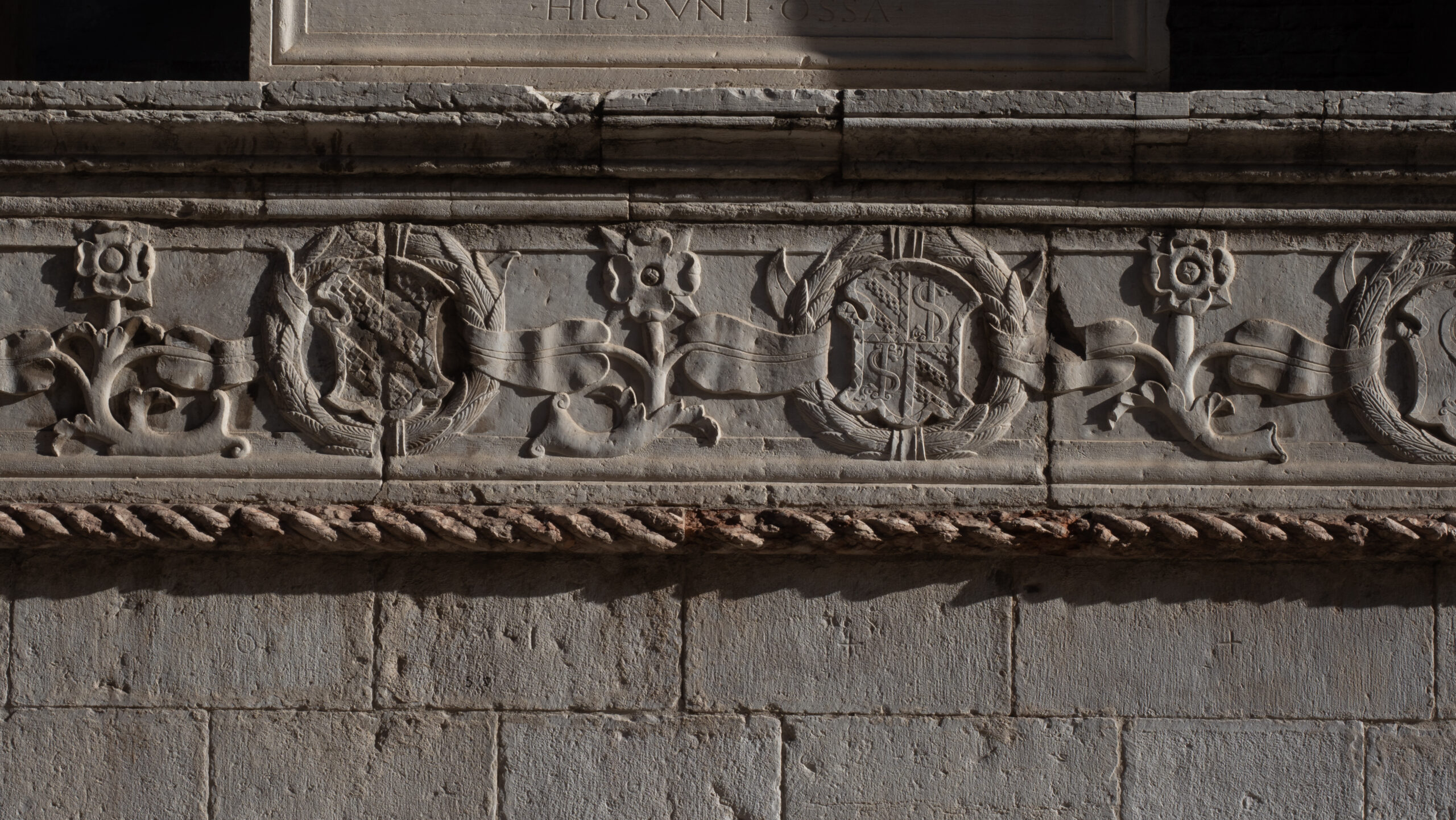
Courtesy Caterina Putaturo, detail of exterior cladding Malatesta Temple, Rimini
The meeting with Sigismondo Pandolfo Malatesta
It was 1447 when Sigismondo Pandolfo Malatesta, lord of Rimini and Fano, became interested in the religious complex of San Francesco. If initially action seems aimed at financing the annexation of large and new family chapels, very soon Sigismondo will dream of providing for an expansion and transformation of the entire Franciscan church.
As Emilio Londi points out:
I don’t think that in that year the lord of Rimini was already dreaming about the idea of reducing the gothic church of S. Francesco to a glorifying temple of his family. But certainly from their first conversations, the two great men of the Renaissance understood and admired each other, and when a few years later Sigismondo entrusted Alberti with the execution of this difficult work , he was sure of finding in him the faithful interpreter of his boundless ambition, just as Alberti, in designing the building for Sigismondo, was sure of lending his work to a gentleman who knew how to appreciate the height of his ideals.
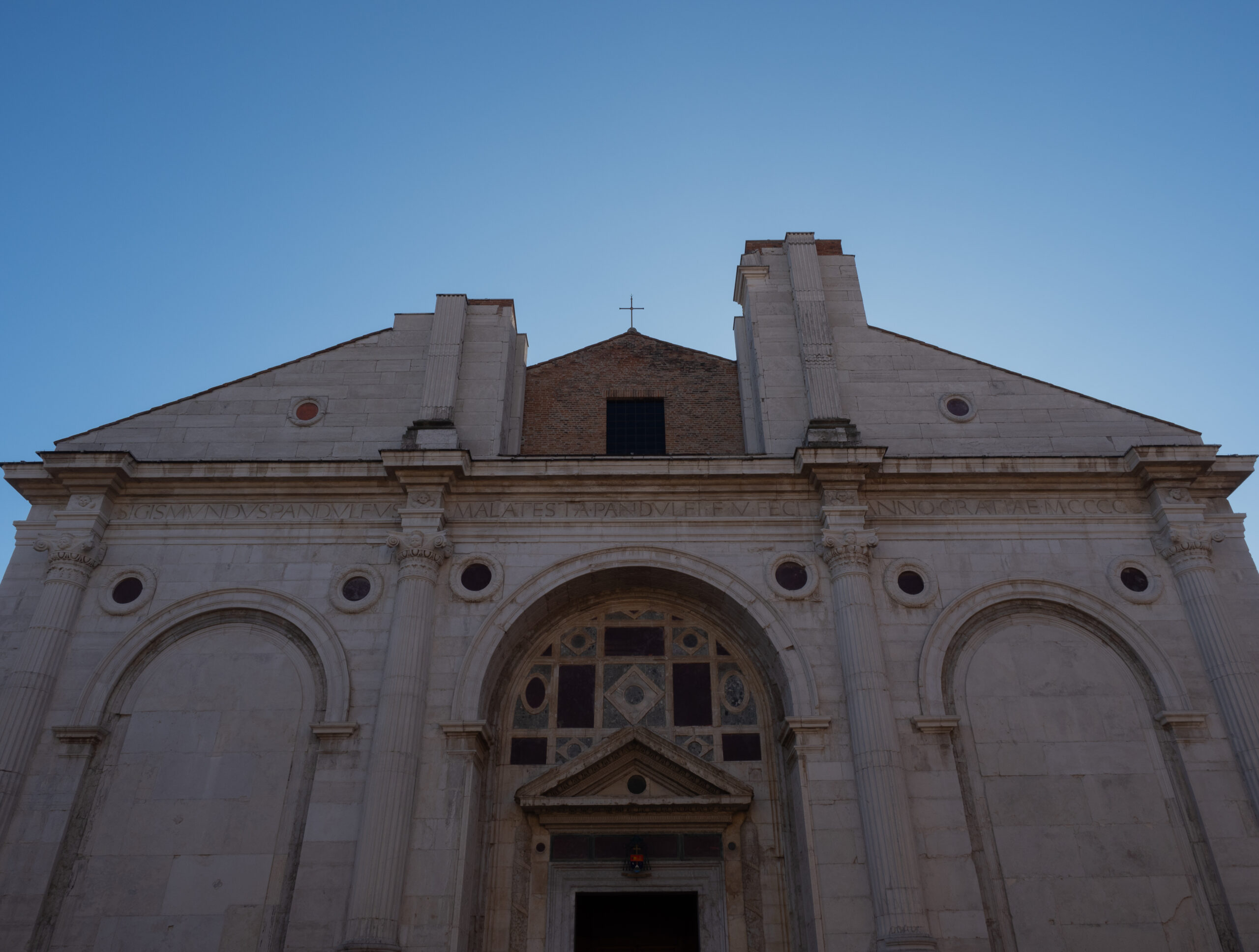
Courtesy Caterina Putaturo, Malatesta Temple, Rimini
According to historiographical sources, it was the excellent relationship maintained with the d’Este family that favored the fortunate between the lord of Rimini and Leon Battista Alberti. It is not difficult to imagine the explosion of ideas and lofty thoughts, which guided the push towards an
intellectualistic remake of that ancient sacred building (it is enough to remember that the first foundation of the disappeared building, Santa Maria in trivio, is due to the monks of Pomposa, for a period of time that oscillates between the 8 th and 9 th centuries).
Leon Battista Alberti in Rimini
Although it is not possible to be certain of Alberti’s presence in Rimini before 1449, it is more than evident that the design of the external covering of the Malatesta Temple was strongly influenced by the ancient Roman ruins present in the city: the Arch of Augustus and the Tiberius Bridge.
The lower register of the Temple facade presents an arrangement of the architectural elements, perfectly traceable in the Rimini arch dedicated to Augustus, following the battle of Actium (31 B.C.).
Alberti, like many other outstanding figures of his time, was extremely interested in establishing a great and albeit innovative relationship with the ancient.
The research and meticulous study of «valuable fragments of an admired time», they flowed into Albertian planning as a key point to seek to overcome this immortal perfection.
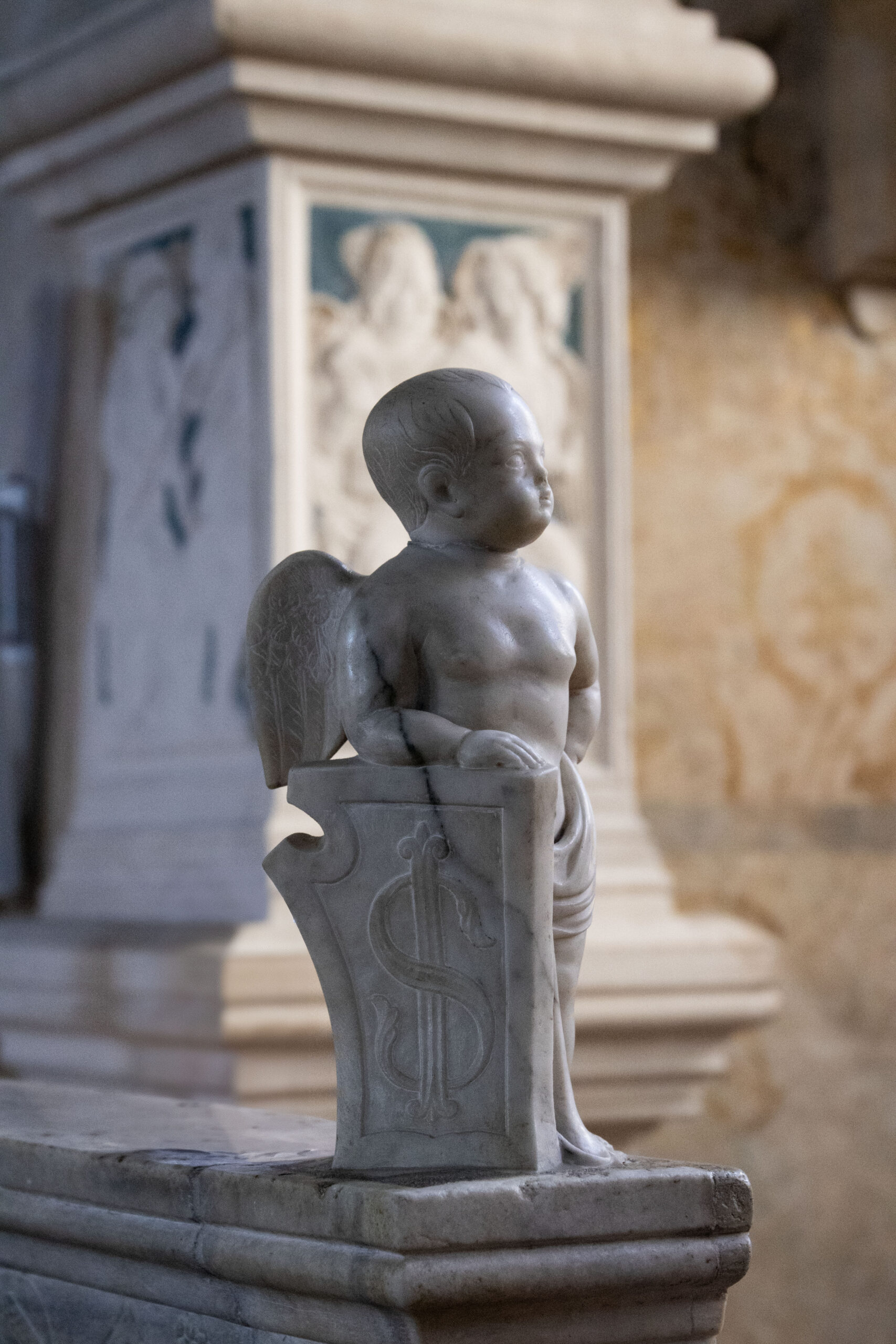
Courtesy Caterina Putaturo, putti by Agostino di Duccio, interior Malatesta Temple, Rimini
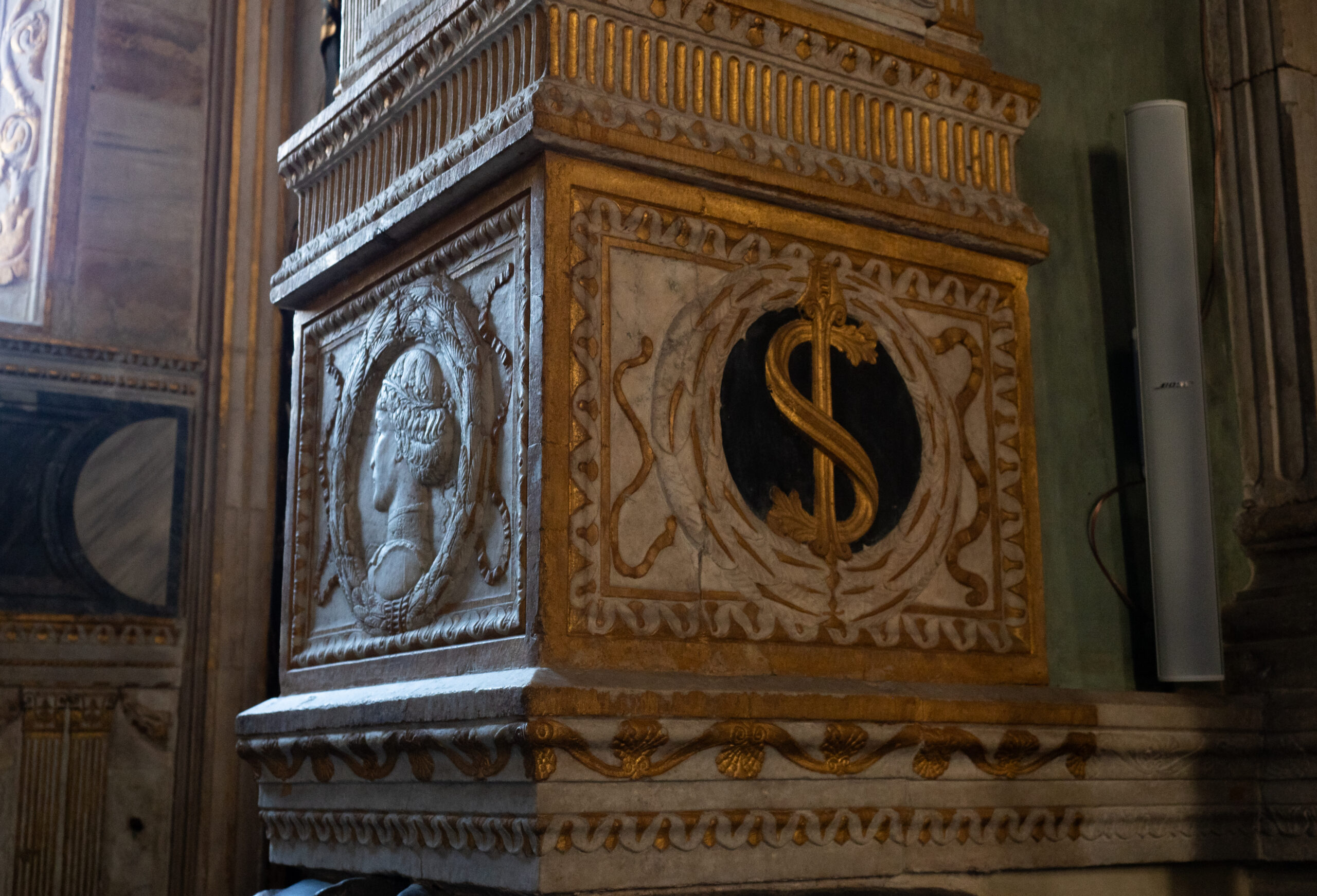
Courtesy Caterina Putaturo, interior detail Malatesta Temple, Rimini
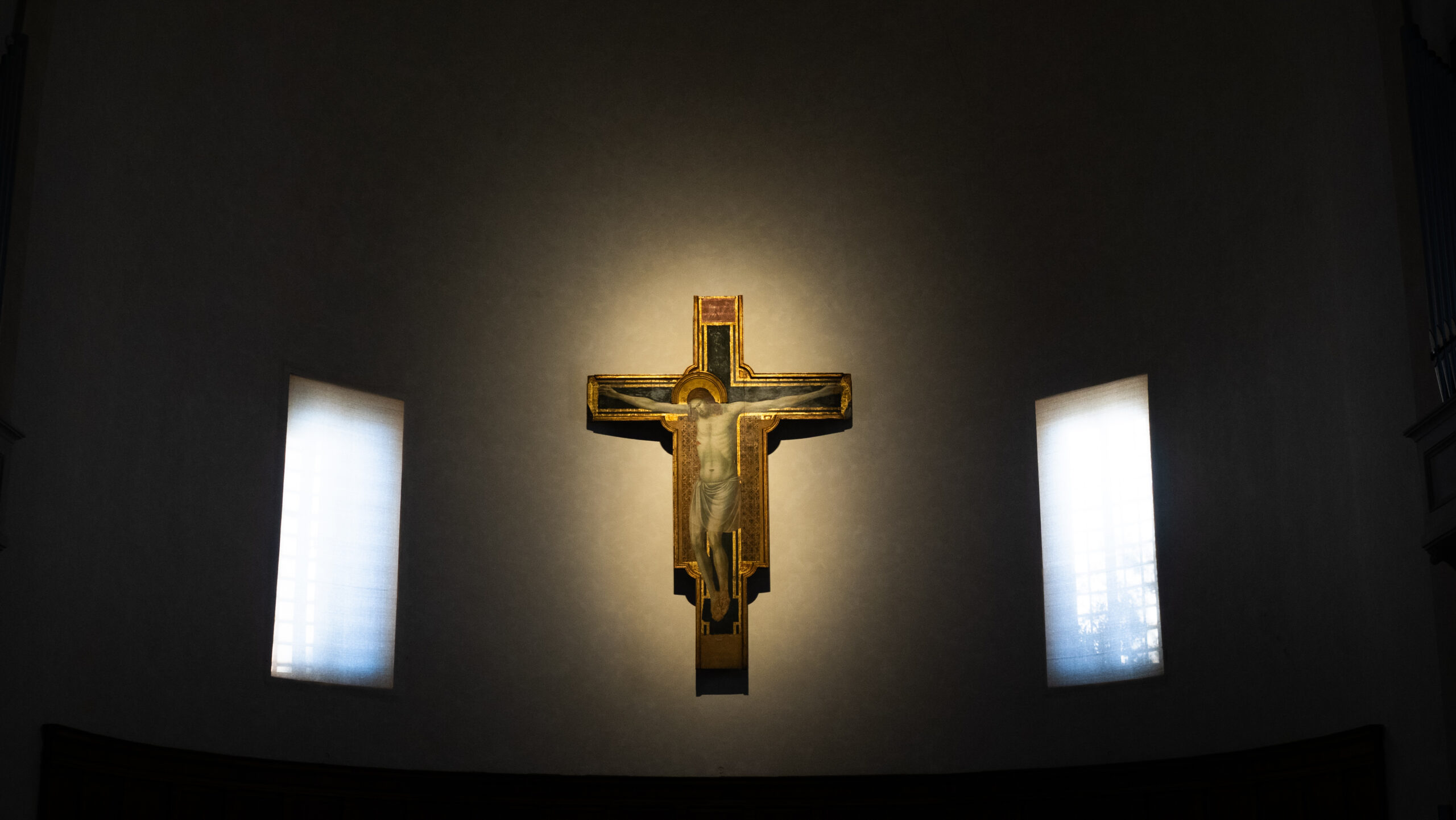
Courtesy Caterina Putaturo, Giotto’s crucifix, interior Malatesta Temple, Rimini
Others would perhaps have been content with simple admiration: not Alberti, who could not conceive of admiration without a direct contribution of industriousness toward the thing admired, who did not understand how there could be a noble side of life to which the cultured man should not apply his ingenuity; in just a word, from the moment he knew and understood the greatness of the art of his time, Alberti felt the need to become an artist.
But which of the three main arts of drawing could be successfully practiced by him who lacked the underlying technical knowledge necessary for every artist?
Architecture alone, since this is the only art in which one can be the creator without being the executor.
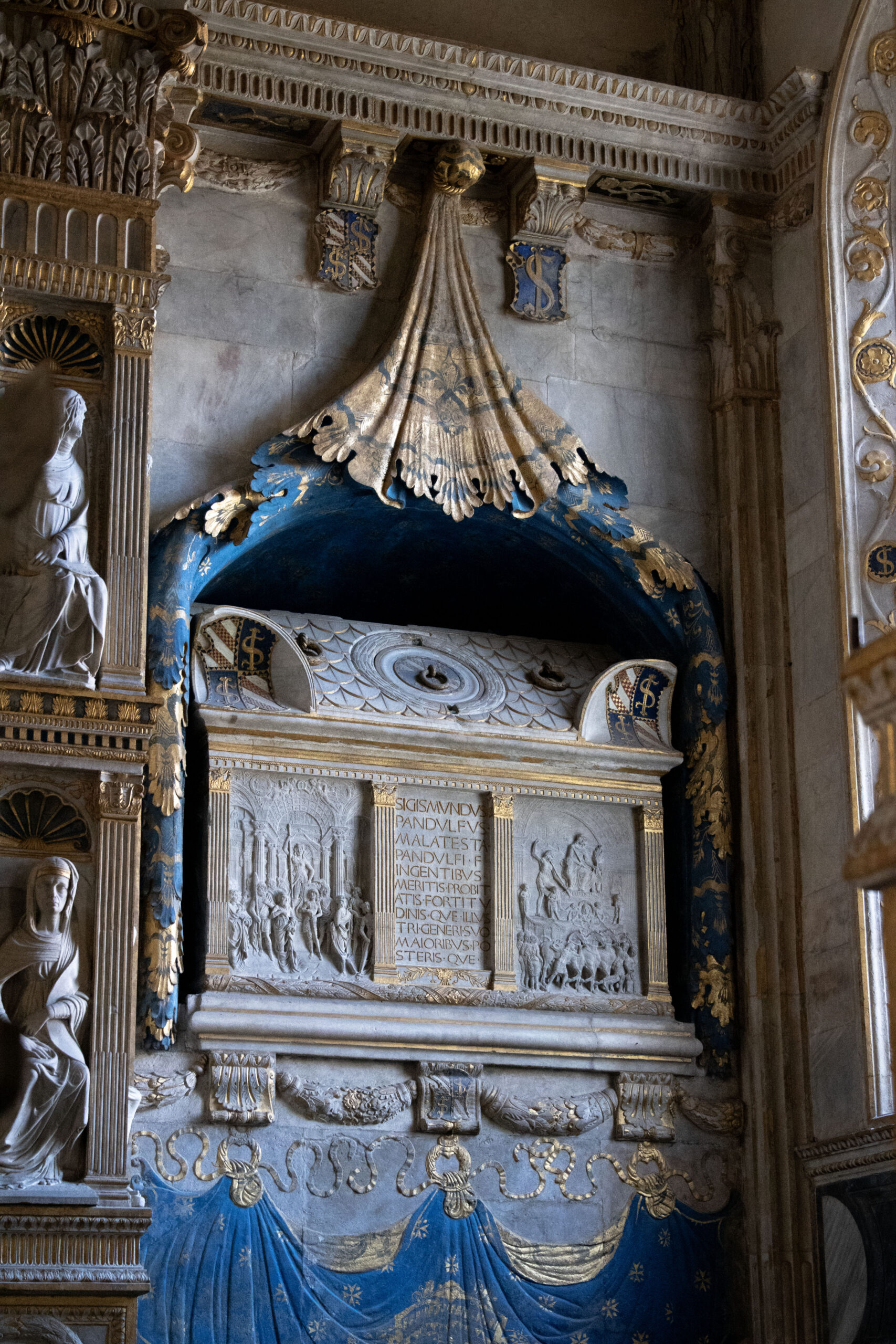
Filippo Casadei, interior chapels Malatesta Temple, Rimini
For the photographic project and the collaboration, we thank Caterina Putaturo.
Bibliographical references
Londi E., Leon Battista Alberti, Alfani Venturi Editore, Firenze 1906.
Pasini P.G., Guida breve al Tempio Malatestiano, il Ponte, Rimini 2009.
Savino F., Con gli occhi delle idee. Scritti per un’altra storia dell’arte, Independently published, Torino 2023.